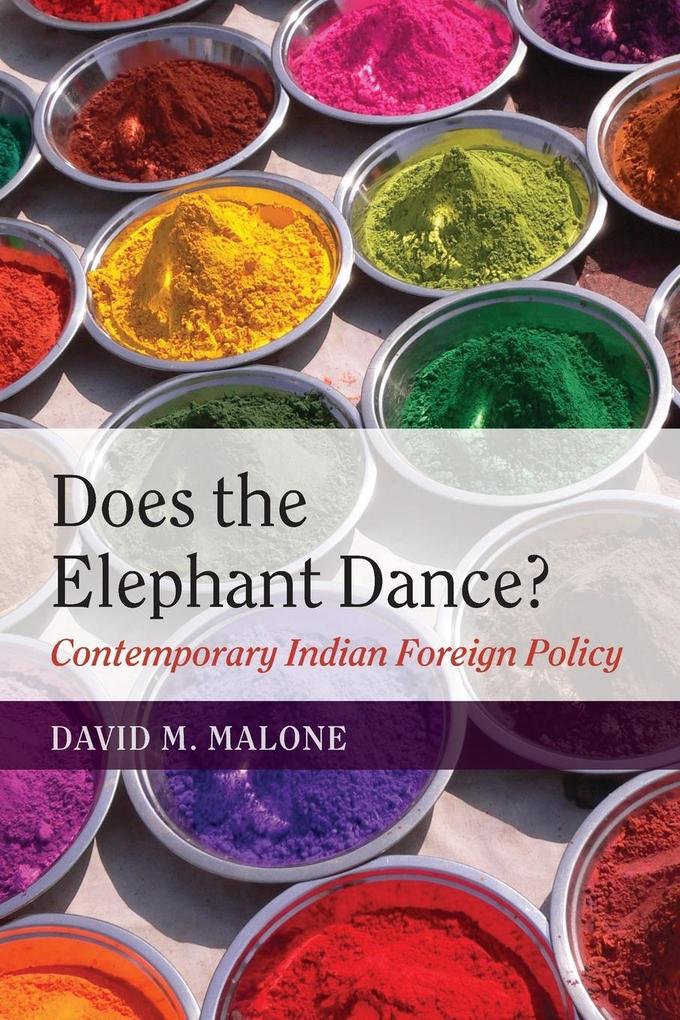
Zustellung: Do, 24.07. - Mo, 28.07.
Versand in 5 Tagen
VersandkostenfreiBestellen & in Filiale abholen:
India today looms large globally, where it hardly loomed at all twenty years ago. It is likely to be a key global actor throughout the twenty-first century and could well emerge soon as one of the top five global powers.
Does the Elephant Dance? seeks to survey the main features of Indian foreign policy. It identifies elements of Indian history relevant to the topic; examines the role therein of domestic politics and internal and external security challenges, and of domestic and international economic factors; and in successive chapters delves into the specifics of India's policy within its South Asian neighbourhood, and with respect to China, the USA, West Asia (the Middle East), East Asia, Europe and Russia, and multilateral diplomacy. It also touches on Indian ties to Africa and Latin America and the Caribbean. India's "soft power," the role of migration in its policy, and other cross-cutting issues are analyzed, as is the role and approach of several categories of foreign policy actors in India. Substantive conclusions close out the volume, and touch, inter alia, on the absence of an organizing framework for Indian foreign policy.
Does the Elephant Dance? seeks to survey the main features of Indian foreign policy. It identifies elements of Indian history relevant to the topic; examines the role therein of domestic politics and internal and external security challenges, and of domestic and international economic factors; and in successive chapters delves into the specifics of India's policy within its South Asian neighbourhood, and with respect to China, the USA, West Asia (the Middle East), East Asia, Europe and Russia, and multilateral diplomacy. It also touches on Indian ties to Africa and Latin America and the Caribbean. India's "soft power," the role of migration in its policy, and other cross-cutting issues are analyzed, as is the role and approach of several categories of foreign policy actors in India. Substantive conclusions close out the volume, and touch, inter alia, on the absence of an organizing framework for Indian foreign policy.
Inhaltsverzeichnis
- Acknowledgments
- Abbreviations
- Foreword
- 1: Introduction
- 2: History: A Vital Foundation of India's International Relations
- 3: India's Contemporary Security Challenges: More Internal than External?
- 4: India's Economy: Its Global Calling Card
- 5: India and its Neighbours
- 6: The Sino-Indian Relationship: Can Two Tigers Share a Mountain?
- 7: India-USA Relations: The Shock of the New
- 8: India's West Asia Policy: Delicate Manoeuvres
- 9: India's East and South-East Asia Policy: Catching Up
- 10: India's Relations with Europe and Russia: Fading Glory?
- 11: The Evolution of Indian Multilateralism: From High Ground to High Table
- 12: Conclusions
- Bibliography
- Index
Produktdetails
Erscheinungsdatum
30. August 2012
Sprache
englisch
Seitenanzahl
448
Autor/Autorin
David M. Malone
Verlag/Hersteller
Produktart
kartoniert
Gewicht
676 g
Größe (L/B/H)
234/156/24 mm
ISBN
9780199661275
Entdecken Sie mehr
Bewertungen
0 Bewertungen
Es wurden noch keine Bewertungen abgegeben. Schreiben Sie die erste Bewertung zu "Does the Elephant Dance?" und helfen Sie damit anderen bei der Kaufentscheidung.









